#jorge clemente
Text
maybe just wishful thinking, but anyone else getting the vibes that aron’s going to be coming back at some point as well
#tbf a lot of his friends were at the party so maybe thats why he went but idk#he’s the only cast member that’s not currently on the show/joining the show/announced as coming back that was there#well i guess besides jorge clemente but i doubt alexis is coming back lol#that’d be nice tho
3 notes
·
View notes
Text
El balcón social | Licitación tras bambalinas en la Secretaría de Hacienda
El balcón social | Licitación tras bambalinas en la Secretaría de Hacienda
#PeriodismoParaTi #SociedadNoticias
#IsauraJannet #Licitación #SHCP #RogelioRamírezdelaO #AlfaroNuñez @R_Ramirez_O @Hacienda_Mexico @GobiernoMX
El Cartel de la Limpieza a parece de nueva cuenta en el servicio público, hoy en la SHCP.
En el engranaje burocrático de la Secretaría de Hacienda, se teje una trama de licitación que, lejos de ser transparente, levanta suspicacias y deja entrever una serie de movimientos que podrían comprometer la integridad del proceso.
La protagonista de esta historia es Isaura Jannet Alfaro Nuñez, recién…

View On WordPress
#Adonaí Carreón Estrada#AMLo#Andrés Manuel#Andrés Manuel López Obrador#Balcón#Claudia#Claudia Sheinbaum#dignidad#El Balcón#El Balcón de la Sociedad#Jalisco#Jorge Álvarez Máynez; Clemente Castañeda Hoeflich; Adonaí Carreón Estrada#Lagos de Moreno#LAura Velázquez Alzúa#López Obrador#México#Movimiento Ciudadano#prioridades#Salud#Samuel García#SN#Sociedad#Sociedad Noticias#Sociedad-Noticias.com#sociedadNoticias#SociedadNoticias.com#Tecnología
0 notes
Text
Calasparra dévoile les cartels de sa Féria du Riz 2023, féria de novilladas !
L’empresa Chipé Production représentée par Pedro Pérez “Chicote” a dévoilé les cartels de la Féria du Riz 2023 de Calasparra. La célèbre féria de novilladas espagnole se déroulera du 3 au 8 septembre avec 6 novilladas.
Grande variété d’encastes puisque puisque sur 6 novilladas, ont retrouve 5 encastes différents.
Les novilleros Lalo de Maria, Clemente Jaume et Tristan Barroso seront les deux…

View On WordPress
#Barcial#Borja Ximelis#Calasparra#Clemente Jaume#Cristiano Torres#Diego Bastos#Gomez Valenzuela#Joao d&039;Alba#Jorge Molina#José Antonio Valencia#Juan Herrero#Juan Luis Fraile#Lalo de Maria#Los Bayones#Manuel Olivero#Marcos del Rincon#Marcos Linares#Mario Arruza#Martinez Pedres#Miguel Serrano#Nek Romero#Pincha#Prieto de la Cal#Rafael Reyes#Tristan Barroso
0 notes
Text
genova, 6 dicembre, "clemente padín e jorge caraballo: poesia visiva 1960-2000"
genova, 6 dicembre, “clemente padín e jorge caraballo: poesia visiva 1960-2000”
CLEMENTE PADÍNy JORGE CARABALLOpoesía visual 1960-2000editado por Riccardo BoglioneEntreactovía Sant’Agnese 19R – Génova – ITALIA6 diciembre 2022 – 13 enero 2023Horas: Miércoles – Viernes 16-19inauguración:Sábado 6 de diciembre, 18 hLa exposición pretende ser un primer acercamiento, sucinto, en Italia, a la producción de los uruguayos Clemente Padín (1939) y Jorge Caraballo (1941-2014) en el…

View On WordPress
#art#art exhibit#arte#di Clemente Padín#Entr&039;acte#Jorge Caraballo#mostra#poesia visiva#Riccardo Boglione#Sandro Ricaldone#vispo
0 notes
Text
The Name List
Organized from A-Z (yes I will add more names whenever I find more I like, probably in reblogs)
I currently have 1035 names (and that’s only including the first names. I have a list of last names, too.)
Angel, Atticus, Atlas, Apollo, Ares, Athena, Achilles, Artemis, Adonis, Avery, Aubrey, Aubry, Aceline, Ashlynn, Aislinn, Anjanette, Arthur, Archer, Addison, Arrietty, Amity, Autumn, Alastor, Alastair, Alasdair, Alistair, Alison, Arren, Arin, Astra, Aoife, Adalyn, Adeleine, Astoria, Agnes, Angus, Abigail, Ann, Anne, Ambrose, Adeline, Avarsel, Agatha, Ari, Azariah, Aniyah, Armani, Anastasia, Annabelle, Adah, Adelaide, Avis, Amelia, August, Axel, Adelina, Amir, Amin, Ayala, Arne, Averett, Adil, Astro, Ava, Anti, Ailun, Akemi, Asahi, Akari, Asako, Atsuko, Azumi, Aka, Aren, Akko
Blossom, Bambi, Babs, Bo, Bella, Blair, Bea, Bonnabel, Badeea, Betty, Bailey, Boris, Bee, Bugs, Blaise, Benjamin, Bog, Buford, Beatrice, Bryce, Bryan, Bazil, Brutus, Bellamy, Brigitte, Bailee, Bailey, Bao, Belladona, Belladonna, Bell, Bill, Bishop, Bones, Boneothy, Benno, Behemoth, Barry, Bellynn, Bowie, Bunki
Clover, Canyon, Cleo, Cameron, Celestial, Celestino, Ciro, Camilo, Cain, Charlotte, Clara, Corey, Cin, Charlie, Cassidy, Chiara, Callista, Cisco, Cynthia, Casper Clinton, Celestina, Clement, Christopher, Cornelius, Clifford, Claudius, Carey, Carrie, Coatl, Cyrus, Cyril, Cecil, Caisus, Castiel, Calla, Cosmos, Cherry, Cheryl, Crowley, Crow, Cassius, Cliodna, Clíodhna, Cliona, Conan, Cordelia, Calypso, Cas, Cillian, Chiyo, Chiaki, Chihiro, Calcifer
Danny, Darlene, Dex, Dot, Diana, Daphne, Demeter, Daedalus, Daeddel, Darphel, Dawn, Derrick, Derek, Dravan, Dravid, Drae, Dallas, Dimas, Dominic, Damien, Drew, Delilah, Dakota, Darian, Darius, Darwin, Devan, Darla, Dagmar, Daelyn, Dale, Dae, Dacey, Desmond, Dabria, Daniel, Daniela, Danialla, David, Davis, Donnel, Dennis, Demitrius, Delaney, Daiki, Daiyu
Everest, Emery, Ember, Elliott, Elliot, Earlana, Eliseo, Ezequiel, Emie, Evan, Eloise, Eric, Emmet, Elizabeth, Eugene, Ethan, Eret, Ester, Elias, Eos, Ellis, Edwin, Ebony, Elijah, Eliza, Enzo, Elissa, Edward, Eddalyn, Esther, Eda, Edalyn, Edalynn, Edison, Eddison, Estervan, Emma, Eden, Erfan, Eun-hae, Erytheia, Egan, Errol, Eiichi, Eiji, Eriko, Etsu, Etsuko, Eiichiro, Ezume
Flint, Finn, Fae, Fred, Fritz, Fang, Frankie, Frank, Fermin, Freddie, Freddy, Finley, Freya, Fai, Felix, Freda, Faolan, Frey, Feylynn, Faelynn, Failynn, Felipa, Febby, Febbie, Febie, Feby, Flynn, Fuji, Feiyu, Fukiko, Fumitaka, Fumito, Fuyuko
Griffin, Garnet, Gothi, Gertrude, Gabe, Grant, Giovanni, George, Gage, Gregory, Gabriel, Gabrielle, Guy, Gilbert, Guadalupe, Gerry, Grey, Gray, Gia, Grace, Gracian, Gracis, Gracie, Gretel, Gideon, Griffilow, Ghost, Ghazaleh, Gavin, Gryphon, Griffith, Goliath, Grayson, Greyson
Harmony, Hannah, Harlei, Harlie, Haritha, Haris, Harry, Harlan, Harvey, Hadrian, Harley, Hari, Harlow, Howl, Hank, Harper, Herbert, Humphrey, Hestia, Helios, Hephaestus, Hollis, Hunter, Hero, Henry, Helda, Hajar, Hasta, Hadis, Howard, Howie, Hannan, Haoyu, Hisako, Hachi, Hiroto, Hoshiko, Honoka, Hiroshi, Hiro, Haitao, Hamako, Haruhi, Harue, Hayate, Hide, Hideyo, Hidetaka, Hisaye, Hisayo, Heiji, Higari
Ivy, Ivey, Ivo, Ida, Iris, Ilyssa, Illy, Irene, Iren, Isaiah, Ira, Idelle, Ivan, Illaoi, Isabel, Isabell, Isabelle, Isobell, Isabella, Ismelda, Io, Ismael, Isolt, Icarus, izuru, Isamu, Itona, Ichiro, Ichiko, Ichigo, Isoko, Ishiko, Isaye, Inari, Ikuko, Itsuki, Itsuko, Inosuke
Juniper, Jupiter, Jinx, Jamie, Javier, Josiah, Joan, Jake, Julia, Jamil, Jamila, Jesse, Jessie, Jess, Jasper, Janus, Jordan, Joshua, Julian, Juilliard, Julius, Juliana, Jeremiah, Jace, June, Junebug, Jazzy, Jackson, Jackie, Jackalynn, Jodie, Johnnie, Jan, Jaime, Jason, Jorge, Justin, Justice, John, Jay, Janelle, James, Jennifer, Jillion, Jill, Jana, Jonah, Jaycee, Jaxen, Junpei, Jona, Jun, Jin
Kenneth, Kat, Kas, Kris, Keith, Kingston, Kaeton, Kingsley, Kent, Katherine, Kyle, Knox, Kristen, Kristin, Kristeen, Kylie, Kaylee, Kamila, Kehlani, Kendall, Kerry, Kry, Kenny, Kath, Kathleen, Krow, Kix, Kedrick, Kennon, Klaus, Killian, Korallia, Krank, Kaz, Kaede, Kirara, Katsuhiko, Keisuke, Kanako, Kenji, Kaemon, Kamin, Katsu, Kaki, Kazane, Kazuyuki, Kazushige, Kenta, Kei, Kimi, Kin, Kohako, Koichi, Kota, Koji, Koharu, Kosuke, Kuma, Kumi, Kuniko, Kuniyuki, Kideko, Kazuko
Lullaby, Lotte, Lapin, Lorelei, Loralai, Lorelai, Luna, Lily, Lucy, Lee, Liana, Lola, Lethe, Lance, Laurence, Luther, Luca, Lennon, Logan, Lennox, Ilias, Liu, Lui, Luis, Lefu, Liam, Lyall, Lowell, Luella, Leona, Leonie, Leon, Lev, Lincoln, Lin, Link, Laverna, Lazarus, Lewis, Louis, Louise, Levi, Leslie, Lesley, Leilana
Marley, Marlai, Mei, May, Mae, Marceline, Marshall, Marshalee, Millie, Mallorie, Marcela, Melanie, Maddison, Mary, Mirabel, Marsh, Murphy, Montgomery, Mildred, Memphis, Molly, Maverick, Maurice, Muiris, Morgen, Max, Moses, Marion, Merrill, Monroe, Melanthios, Maxwell, Matias, Melissa, Maëlle, Marlene, Meredith, Maybelle, Margaret, Maeve, Moss, Mara, Maria, Myrtle, Mona, Mark, Markus, Michael, Micheal, Michelle, Mahsa, Minoo, Mehdi, Mohammad, Matin, Morpheus, Marlowe, Monica, Marilia, Magnus, Malachi, Malachy, Maggie, Makoto, Megumi, Mio, Maemo, Maemi, Masa, Masaaki, Masashi, Michi, Midori, Michinori, Momo, Motoko
Natasha, Noelle, Noni, Neville, Nixon, Neda, Natalio, Ned, Nausicaä, Noxis, Nova, Nathen, Newt, Noah, Nash, Nox, Nathara, Nathaira, Nathair, Nyoka, Nagisa, Nathan, Nate, Nik, Nick, Naohiro, Naoko, Nara, Natsu, Naoya, Nishi, Nobuko, Nori
Olindo, Ollie, Oliver, Ophelia, Odysseus, Orion, Osono, Oxen, Onyx, Otto, Ottoline, Otitile, Ottavia, Octavio, Olivia-Marie, Oakley, Omar, Olivia, Oscar, Octavian, Octavia, Oz, Octavius, Otta, Oisin, Orson, Orlos, Osiris, Owen, Odalis, Odell, Ozuru
Penelope, Patton, Paddy, Percy, Paulie, Page, Pazu, Phoebe, Phebe, Prairie, Porter, Parlay, Pally, Piper, Parker, Payton, Phil, Paul, Philip, Pyre, Piers, Phylis, Patricia, Payne, Payneton, Pip
Quinn, Quincy, Quil, Quinley, Quinstin, Quinlan, Quillen, Quavon, Quaylon, Quensley, Qing, Qrow, Quilla, Quianna, Quita, Qiao, Quinella, Queenie, Qaylah, Qailah, Qitarah, Quenby, Qadira, Qudsiyah, Quan, Qian, Quinby, Quella
Roseline, Raul, Rahul, Rafael, Roque, Rogelio, Remmy, Rei, Rey, Ray, Robin, Ro, Reika, Rowen, Rowan, Rose, Rosie, Ralsei, Riley, Remus, Rosalyn, Rosalin, Rosaline, Renata, Ron, Rat, Ratt, Reef, Roxy, River, Reed, Rufus, Robbie, Renee, Rivia, Ross, Rex, Ruth, Rosemary, Rosabe, Rosabee, Rosabell, Rosabelle, Rosabel, Rai, Rain, Rosella, Rosalie, Rhody, Robert, Raelinn, Rebane, Ren, Rollin, Ralph, Roxanne, Rox, Roderick, Reginald, Reggie, Rio, Ryu, Ryo, Ryoji, Rinmaru
Sage, Sam, Syd, Selkie, Storig, Sal, Sirius, Summer, Susie, Scott, Sunni, Sosuke, Sophie, Satsuki, Sheeta, San, Sulley, Sully, Savannah, Sappho, Selene, Shaw, Sean, Seán, Shaun, Sawyer, Sabrina, Sebastian, Shane, Stan, Socks, Snom, Stolas, Spencer, Sammie, Stevie, Samus, Sarff, Sullivan, Seth, Susiebell, Susiebelle, Sadreddin, Shellaine, Sverre, Saoirse, Sylvania, Sanae, Silas, Sumi, Shiori, Shinzu, Sile
Toby, Tobias, Teddy, Ted, Tomas, Thomas, Tomothy, Tyche, Taiga, Tundra, Tracy, Timothy, Troy, Tatum, Tommie, Tommy, Theia, Tae, Trix, Trixy, Thanathos, Tod, Todd, Toddy, Tora, Torie, Theodore, Theo, Theophania, Talos, Thanatos, Teddy, Tomohito, Tazu, Tanjirou, Touya
Ulysses, Urijah, Uriyah, Urina, Ukiah, Ulnar, Ursula, Ulric
Virgil, Vanessa, Vito, Venacio, Vylad, Veronica, Valentina, Violet, Velma, Venus, Verna, Veld, Victoria, Victorie, Vinyl, Vincent, Vasuki, Vex, Valor, Valentine, Valerie, Valeria, Valerius, Vitoria, Vic, Victor, Vik, Vikktor, Viktor, Vick, Vicky, Vicke, Vickie, Vidya
Wynn, Willow, Warren, Wilbur, Wylie, Will, Walle, Whisp, Wade, Wendell, Wendy, Willard, Wes, Wallace, Wilber, Wyatt, Wybie, Wynnie, Wennie, Winnie, Wynnston, Wynston, Wynsten, Wiles
Xenophon, Xuan, Xio, Xori, Xanthos, Xander, Xavier
Yen, Yukio, Yae, Yoko, Yume, Yaeko, Yui, Yuzuki
Zane, Zana, Zion, Zachary, Zach, Zachariah, Zander, Ziana, Zoe, Zula, Zenix, Zenith, Zaharia, Zaria, Zack, Zakaeia, Zara, Zakaria, Zev, Zaira, Zanata
#my posts#character names#name suggestions#name ideas#name list#names#trans#transfem#transmasc#transgender#nonbinary#genderfluid#genderqueer#agender#genderflux#bigender#demigender#demiboy#demigirl#if you want names#i got em#like a fuckin fae#takin whatever names i like
98 notes
·
View notes
Text
Imágenes de mi tierra - Vol. I
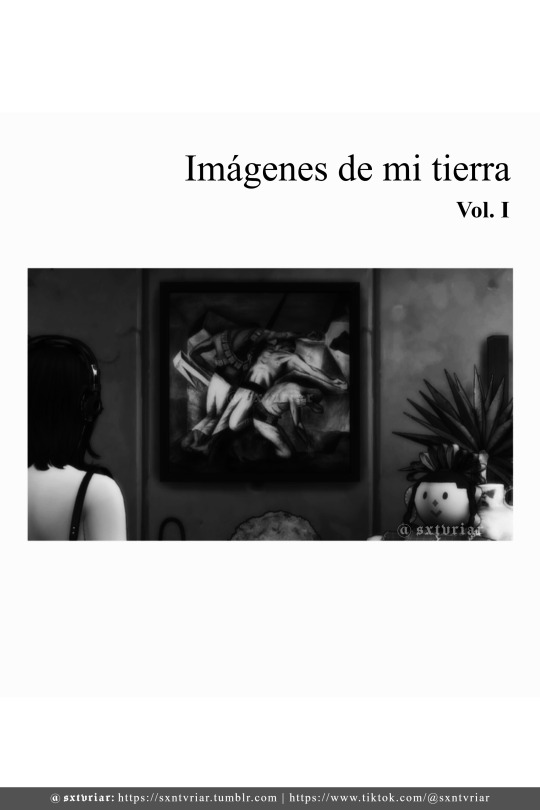
"Imágenes de mi tierra - Vol. I" nace de mi necesidad de poder reflejar un poquito más de mi realidad en el juego. Entiendo que "The Sims 4" refleja únicamente el paradigma estadounidense, sin embargo ―considero que― no existe una conexión real con este cuando hablamos de la experiencia de jugadorxs latinoamericanxs. Es por esto que me decidí a incluir en el juego una serie de obras hechas ―en este caso― por gigantes en el ámbito de la pintura en México, la mayoría de ellos forman parte del Movimiento Muralista Mexicano.
Para comprender en qué consistía; el Movimiento Muralista Mexicano...
"Tiene su origen en la Revolución mexicana de 1910, paralelamente al movimiento de transformación en México. Sin embargo, no es hasta 1921 cuando inicia formalmente el Movimiento Muralista Mexicano, año en que José Vasconcelos, uno de los principales intelectuales mexicanos, asumió funciones como Secretario de Educación Pública bajo el Gobierno del Presidente Álvaro Obregón, quien comisionó a distintos artistas a pintar una serie de murales en las paredes de la Secretaría Nacional y la Escuela Nacional Preparatoria. A partir de ese momento, la Escuela Muralista Mexicana comienza adquirir prestigio internacional no sólo por ser una corriente artística, sino por ser un movimiento social y político de resistencia e identidad, con imágenes a través de la diversidad de sus componentes estilísticos que retratan temas como la revolución, la lucha de las clases y al hombre indígena."
(Gobierno de México. (s. f.). El Muralismo Mexicano. Secretaría de Relaciones Exteriores. Recuperado 18 de diciembre de 2023, de consulmex.sre.gob.mx).
A continuación, adjunto capturas directas de mi juego con el objetivo de que se pueda apreciar cómo se ven:
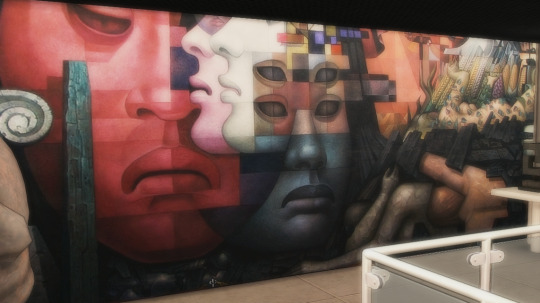
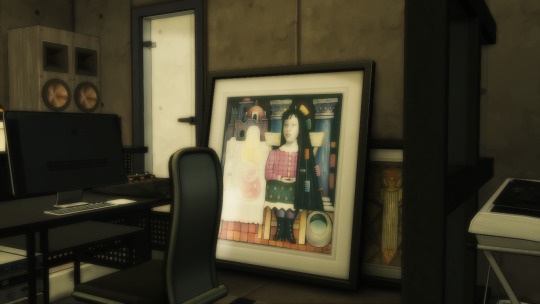

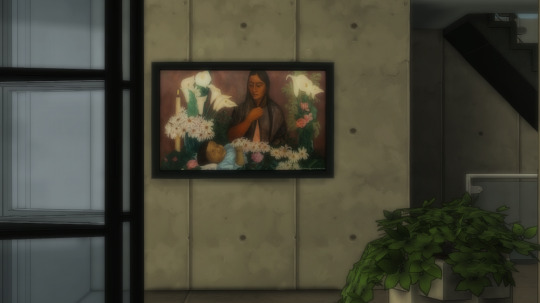

En este volumen, las obras que seleccioné son las siguientes:
Acto I:
"Niño muerto" - Olga Costa.
"Dioses del mundo moderno" - José Clemente Orozco.
"Solo en Do" - Rafaél Coronel.
Acto II (Mural):
"Presencia de América Latina" - Jorge González Camarena.
"Liberación" o "La humanidad se libera de la miseria" - Jorge González Camarena.
"El tastuán y la niña de Jerez" - Rafaél Coronel.
"Katharsis" - José Clemente Orozco.
"Nacimiento de nuestra nacionalidad" - Rufino Tamayo.
"México de hoy" - Rufino Tamayo.
"Dualidad" - Rufino Tamayo.
"Alegoría de la Producción" - Fermín Revueltas.
Acto III:
"Aguas frescas" - Jorge González Camarena.
"Sueño y pensamiento" - María Izquierdo.
"Piedad en el desierto" - Manuel Rodríguez Lozano.
"La trinchera" José Clemente Orozco.
"Alegoría del viento" - Roberto Montenegro.
Espero sea de su agrado esta adición; es la primera vez que hago contenido personalizado, así que no estoy segura si habrá algún problema o bug existente. Personalmente; no tengo ningún problema en mi juego. Cualquier cosa, déjenme un comentario o mándenme un DM para poder encontrar una solución respecto a los archivos.
Descarga - Dropbox
¡Tengas buenos días, tardes o noches!
― Sxntvriar xx
#ts4#ts4 simblr#ts4cc#sims 4#ts4 costum content#ts4mexico#méxico#arte#decoracion#wall decor#ts4 decor#ts4 deco cc
11 notes
·
View notes
Text
Blaze's Compendium Entry #3: Do not try to steal from Vouivre!
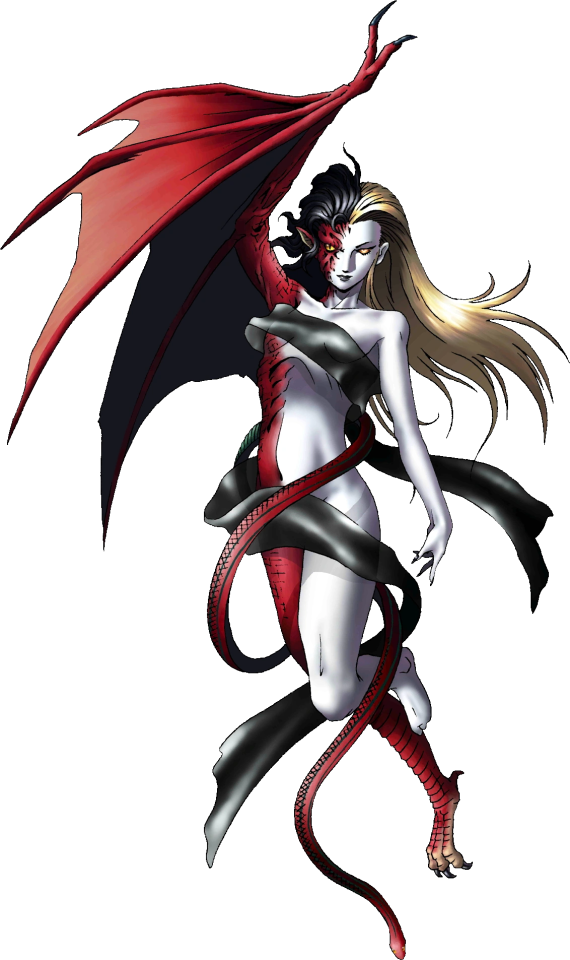
The Vouivre is known to be a Draconic creature from the French folklore. Specifically from the Eastern part of France. The Vouivre is not to be confused with her fellow local dragons such as the Guivre, Wivre or the Melusine. Her differs herself for two key elements: Her almost always feminine humanoid looks (Although, sometimes shes also described as a fierce serpentine dragon) And the jewel in her forehead, called the Carbuncle. This jewel is precious to the Vouivre because it grants her eye sight, and also (according to some sources) heat. It could also be or not be her only eye, depending on the legend.
Vouivres are neutral beings. Generally they don't pick fights with humans, only if provoked or in self defense. Which is fairly common, since the greedy humans try to steal her jewel all the time, which is said to be more valuable than ''any mineral found in any Brazilian mine'' (Jenin Clement, 1884: ''Traditions Populaire de la Cote d'or'')
The jewel received it's name thanks to the Latin world ''Carbunculus'' which meant something like hot coal. That's because, according to the legend, the Vouivre's jewel was hot and bright like hot coal.
It does not help that the Vouivre is usually hoarding lots of gold and treasure in her lairs, which also attracts many unwanted attention. If, the Vouivre needed to fight, fortunately for her she was blessed with such strong flames that she could completely carbonize a human being to ashes. (Faune et Flore de la French Comtee, 1910- Beauquier)
But more often than they would like, the Vouivre would be hunted down during their most vulnerable period: When she had to take off the Carbunkle out of her forehead, and bath or drink water. That's the period she had to protect the Carbuncle, it should not fall into water, it would lose it's fire powers. And although there's few to no sources that state that this would kill the Vouivre, the Faune et Flore de la French Comtee book states at least one instance where removing it for too long would kill the creature. If you consider that the Carbuncle is destroyed after falling into water, it means she would also die.
In most of the tales, the Carbuncle serves as the Vouivre only eye. There's few sources where it is just a jewel embed into the creature's forehead, and in others it was part of a crown she wears. According to some sources as Jenin Clement, 1884: ''Traditions Populaire de la Cote d'or, looking directly to her Carbuncle (or her eyes) would cause confusion, panic and fear, making you completely immobilized.
According to a web page from the Fremch Comtee government, the Carbuncle is ''so valuable that not even all world's gold could afford it.'' This page in question is long dead, but there's some content of it available at the site Blackdrago. Not the most reliable source out there, but at least they saved this page's content. Also saved in Blackdrago, there's also a dead link to an article of the Fremch Comtee government about the origin of the Myth. This page is available at the wayback machine!
Fun fact: Carbuncle is also the name of the infection caused by the Anthrax. Anthrax has its own name meaning ''coal'' (ἄνθραξ) in greek. That´s because the infection causes skin damage that looks like coal. The relation with the Vouivre is probably none, but i thought it was cool enough to put here. Please i can't stress it as much as i want but do not google it!
For those more versed in Mythological beings, demons and mysterious fantastical beings, you may recall the name Carbuncle as another mythical creature from the South American Folklore. The Book of Imaginary Beings, 1975 edition (Jorge Luis Borges) Describes the Carbuncle as a mysterious creature that the 16th century Spanish Conquistadors painted as elusive. A poet-priest called Martin Del Barco claimed to have seen one in Paraguay, and has described it in its 1606 poem ''Argentina'' (If you asked me, it's weird that it was in Paraguay, but was featured in the Poem named Argentina... but, ok.)
The Carbuncle, not only for it's name shared an eerie similarity with the French Vouivre. Martin described it as a ''small animal, with a shining glowing object in it's head, like a glowing coal.'' It's jewel was also sought after, and supposedly very valuable. I wont dive too deep in this creature here and now. The point is that the Vouivre had some similar creatures, even such a distant ''cousin'' as the Carbuncle of South America.

Final Fantasy's interpretation of the (Creture) Carbuncle.
Back to the Vouivre:
The window of time to get the Vouivre in her vulnerable state varies according to the region, or tale. Some say is once a year, or even weekly. The book ''The Drac: French tales of Dragons and Demons'' (Felice Holman, Nanine Valen, Stephen Walker - 1975) Tells about a tale where the Vouivre comes out only once a year. Normally the sources agrees it's when there's an important mass, and the people are too busy to care about the creature. This could be at Easter or Christmass (Christmass would be specially told in the Audrey region). In deeply catholic societies, nobody would flee from the church just to hunt the Vouivre. (Oh boy some did)
In tales from Monthier the Vouivre would come out at the eleventh first midnight bell from the clock, during Christmas night. The common sense is that they are generally very intelligent, that's how they know the perfect timing to be alone.
But also on her weak spot was the fact that the Vouivre had very frequent habits, which could mean that someone smart enough would eventually figure out how to reach her. She also had the ability to stun foes, although i just found one source about this skill in the book Jenin Clement, 1884: ''Traditions Populaire de la Cote d'or' Honestly, she's just trying to be alone, hoarding her treasure and caring for her hygiene. I can relate.
According to the book ''Faune et Flore Populaires de la French Comtee'' The name Vouivre came from the Latin word Vipera, which means viper. Vouivre can also means just ''wyvern'' in a general term, and not specifically this tale. Going by the Indo-European root you get to the word ''Gwer'' which means something warm or hot. From there, the word Wyvern comes from. It was meant to refer a fire serpent, or a type of dragon. This relation with the warmth and heat could also explain the Jewel that the Vouivre has, and the relation of this creature with the fire element.
There's some speculation about her name influencing regional dialects. For instance, the Morvan Dialect Glossary has the word Vouavre. This could mean heat or something wet. If the translation goes for the first option, this could theoretically be another association, or even where the original name of this dragon came from. Morvan is a dialect of the region Burgundy and is a french derivative. But i could not find any translator for this dialect, nor any confirmation this word even exists, so take it with a grain of salt.

She could canonically use agi!
There's a lot of places in Eastern France that bears the Vouivre name, that's how popular the legend was there. Many of those places are described in books such as the ones mentioned above (sources will be in the end of the article) are simply too old, some are not even there anymore. But surprisingly you can use google maps to check, and see that still there are many places with the name out there.
During my research, i also found out there's a french movie about this legend, called La Vouivre (1989). Honestly, it seems pretty interesting. It's about a WW1 veteran who became obsessed with the legend. (Just as did i, when i wrote 40ish pages of research for this text) I will take my time to watch it some day, and i will probably post my thoughts here.
Because their tendency to get mugged by Humans, Vouivres tend to like isolated places, where they can live alone and in peace. This could be old monasteries, old castles, caverns, or deep woods. No matter the source, Vouivres always like to be alone, have regular habits and are (mostly) neutral. Some of those locations in Eastern France are so associated with this creature, that it has either named it or became a symbol of this place.
Take for instance The castle of Vaugrenans. (We will be back to it later) The place was destroyed in the 17th century, and now is just ruins in which people said a Vouivre lived. It got so associated with it, there's a sign near it telling about the legend. In this case, the Vouivre was also interpreted as a creature who controlled, and used snakes. This particular feature can be seen in Kaneko's design of the Vouivre, since she has a snake in her body.

This Picture was taken from Google Maps, you can check by yourself! It depicts the Vouivre from the Vaugrenans Castle ruins.
The Vouivre were also commonly associated with rivers and streams, where supposedly they took their baths and drank water. Some hills, falls and mounds also got associated with it.
At least in one Source they used their feminine looks to seduce the human assailant, and get out of the danger. (Jenin Clement, 1884: ''Traditions Populaire de la Cote d'or').
Most of sources agrees that the Vouivre has bat-like wings, and when flying through the night sky, lets out a flame trail, like a shooting star. The sources like the Faune et Flore de la French Comtee, 1910 states that the creature could reach 2 meters tall.
The book ''The Drac'' Describes some tales of people that tried to actually rob the Vouivre. One man actually succeeded in getting her treasure, but not the Carbuncle. He made home with gold, but ended up dying by a mysterious illness, and the fortune disappeared.
In the Faune et Flore de la French Comtee, 1910 book, there's a legend about a man that succeeded in stealing the Carbuncle and also killing the Vouivre. The man blinded the creature taking the jewel, and had prepared beforehand a pit full of spikes. The man made the dragon fall to her death, and took the Carbuncle. But the thing was so valuable he never managed to sell it, dying without seeing a single coin from it. The treasure vanished not long after his passing.
Another tale from this particular book tells the horrifying story of a poor and hungry family, that ended up trying to steal the Vouivre's treasures to survive. The mother has the not so great idea to invade the dragon's cave with her infant son, while the creature was absent. But they takes too long that the Vouivre gets back before they could leave. In a hurry the mother left the children behind, who got stuck inside the cave when the Vouivre closed it. The mother waited camped in front of the cavern getting help from her neighbors, crying for her son. Exactly one year later, when the Vouivre exited the cave, her children was unharmed and could escape. Honestly, who would invade a dragon's den with a toddler? That's on her.
The legend was also spread from all over Eastern France. Regions such as Burgundy, Niverneeis and Baurbonnais were also prolific Vouivre nests, according to legend.
In the book Faune et Flore de la French Comtee, 1910, the author also compares the Vouivre to two other mythical beings. First: The Basilisk. Some people made this association due to their similar habitats, but the Basilisk being actively violent towards people.
There's a piece direct from page 12:
''...It (The Basilisk) was believed to be close related to the Vouivre. But much more terrible. (...) It inhabited old walls, attics and old houses, and guarded treasures...''
There are some similarities, but those are generic traits of mythological monsters and demons. They could be attributed to any creature, but i found interesting.
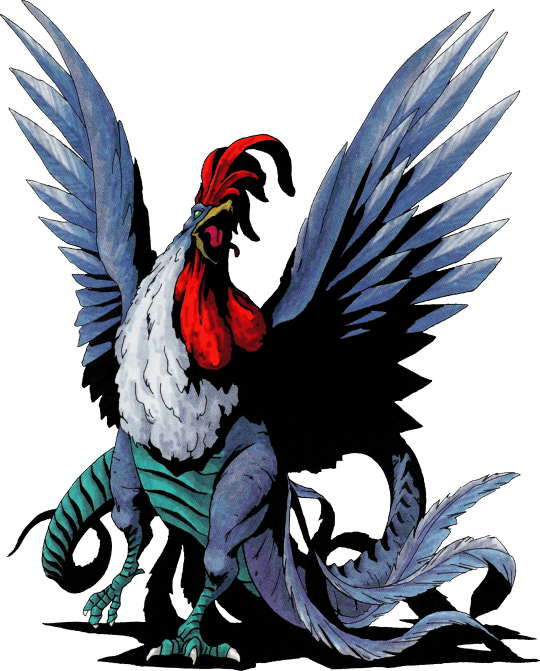
The Basilisk, by Kazuma Kaneko.
The other mythological creature discussed in the book that could be related to the Vouivre is the Melusine. Another distant cousin? The Melusine are humanoid creatures, sometimes half fish and half snake. In this book, the author draws parallels to the Vouivre, due to Melusine some times possessing snake-like features.
Much popular in Europe during the 14th century, the myth of the Melusine ended up making appearances in many coat of arms around Europe. Like the Holy Roman Germanic Empire, Escandinavian and the Warsaw City. Although many times treated as a snake, the association with the Vouivre comes from some draconic interpretations. This could be one of the origins, but its unclear.
This was not the only mention of the Melusine relation with the Vouivre. In the book Jenin Clement, 1884: ''Traditions Populaire de la Cote d'or', this also mentioned. They do share similar bodies, but the Melusine lacks the distinct Jewel in her forehead.
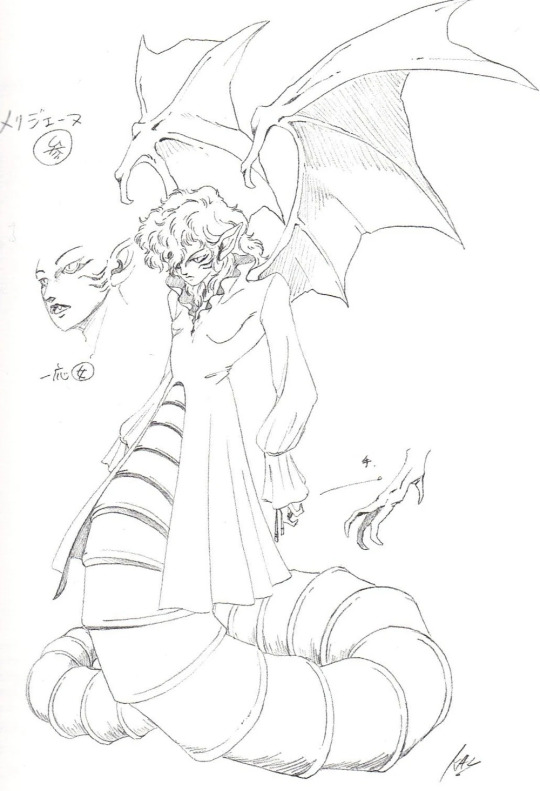
The Melusine, as it is portrayed in Shin Megami Tensei: If... by kazuma Kaneko.
There are some surviving records of first hand accounts of people who swear that they saw the creature. According to Faune et Flore de la French Comtee, 1910:
-In 1835 a villager from Jura, in the Dole district was about to go inside a pit where he saw treasure. He supposedly ran away crying in horror and blacked out. He said he had met a Vouivre face to face. Other villagers from that place and time swear they saw the creature as well.
-In 1850 in Augeraus someone actually tried to shoot the thing. According to the account, the demon was naturally unharmed.
Again at the book Jenin Clement, 1884: ''Traditions Populaire de la Cote d'or', There's actual names of People that got involved with the creature, supposedly:
-A couple called Jaquot and Jaquette (There's no way this is real, this is some serious Wario and Waluigi stuff)
-A Man called Nicolas Broreau
According to legend, this man actually survived his encounter while trying to steal from the creature. The creature stunned and seduced him, using her brains to get her jewel back. She even gives him some of her gold, but since he did not made what she demanded, the gold turned into rocks. This was also one of the few instances of sources where the Vouivre had two eyes, and not only the Carbuncle.
Those were the more interesting ones, but there are a lot of cases, and a lot of legends, it's hard to put everything down here. But again, sources will be in the end.
But by far the most interesting story of the Vouivre came from the book Jenin Clement, 1884: ''Traditions Populaire de la Cote d'or'. Here we go back to the castle of Vaugrenans, a chateau in eastern France. We are presented to the owner of the castle, but she was ruined by her beauty and excesses. This turned her into the demon Vouivre, who terrorized the town. She had a son, a knight who fought her to put an end to her destruction. According to this legend, the archangel Michael helped the Knight named George, who ended up killing the Vouivre destroying her Jewel and crushing her with his Horse.
In depression for killing his mother, he asks the Archangel to be punished. Michael burns the man and spread his ashes. He later is reborn as a child again, and was supposedly canonized.
When i first read this story it caught my eye that this is too similar to the Saint George tale, of killing a dragon. The name and everything. This tale could be indeed be a rationalization of the saint's lore. As i said above, this place is indeed known for the Vouivre legend, but there's nothing there indicating that this Saint tale is really associated with it as far as i have gone.
There's also a city in north-western France, called St. Georges du Vievre. This city has a name very closely related to the Vouivre and also depict a Saint George. This village today has less than 1000 people living there, and was first shown in a map in 1164 with his latin name: ''Sanctus Georgus De Wevra''.
Supposedly, Vievra refers to neraby woods called Guevra. This was the name of the place at least at the 11th Century. The name indicates that there was a dragon who ate children living in that place, that according to legend was killed by Saint George. (Probably not the same of his legend, this could be a regionalization of the myth, but all indicates it was just a regular Wyvern) This dragon was a Wyvern, the original meaning of the name Vouivre. Simply a Wyvern. The word could predate Latin, maybe going for more indo-European roots, but honestly it's hard to know.
The emblem of the village is literally Saint George killing a giant snake, which take us back to the original meaning of Vouivre and Wyvern, coming from the Latin word Vipera.

This village, as far as my research has gone, lacks any Vouivre tales or legends. Instead, the name here is merely a recall to its original meaning as the word for viper and Wyvern. This was sourced by the book ''Gentillhomeires des pays de l´eure'' Franck Beaumont, 1999. I've only found articles about it, the book is quite elusive. If you have it, or ever found it let me know!
In conclusion:
As such any local folklore, it's almost impossible to pin down the origins for the myth of the Vouivre. The common theme here is that of ''Risk and Reward'' type of cautionary tale, but also the European fascination with dragons.
Dragon tales were not uncommon at France, and we even already told about the Wivre, Guivre and many others. What makes the Vouivre tales interesting is that she was almost always minding her buisness, when the humans are the ones who cause her trouble. It's also worthy to note how in almost all of the tales there's never a happy ending for those trying to steal from the demon, even when they seems to achieve success in their endeavors to get the treasures from the Vouivre, something goes wrong. It goes to show how some things are just not made for human hands, no matter how much our species try to go over it. There was never pressure to hunt the Vouivre, most of them were not doing anything wrong in their tales, but yet the Humans tried to conquer their power to themselves.
There are many other interesting draconian mythological beings in Europe, and the Vouivre is specially popular in the particular Eastern region of France. It's a good display on how folklore and cultural traditions can influence a community, becoming naming conventions and symbols of that place's history. Today there's many people that fight to preserve this history, and i believed that researching and posting about it would do it's part.
I hope you all enjoyed. Please reblog, like, or interact to the post to spread the Vouivre's tale.
And remember, never try to steal from the Vouivre!
Sources:
Jenin Clement, 1884: ''Traditions Populaire de la Cote d'or''
Faune et Flore de la French Comtee, 1910- Beauquier
The Drac: French tales of Dragons and Demons'' (Felice Holman, Nanine Valen, Stephen Walker - 1975)
About the South American Carbuncle:
The Book of Imaginary Beings, 1975 edition (Jorge Luis Borges)
Note: All the books are in french, and i used software translation to read it. I am not familiar with the French geography, so if i got any place or name wrong, let me know!
#Vouivre#shin megami tensei#devil summoner#mythology#european mythology#french folklore#kazuma kaneko#wyvern#mythology and folklore#folklore#dragons#atlus#Vaugrenans#blazescompendiumentry
37 notes
·
View notes
Text
Aula 12 - Museu Nacional de História do México
Na aula do dia 08/09 tivemos a apresentação do livro “Imagens da Revolução Mexicana: o Museu Nacional de História do México (1940-1982) “de Camilo Mello Vasconcellos onde o autor traça um paralelo entre a história política mexicana e suas implicações no Museu.
Fica claro para mim com as apresentações dos seminários como cada regime político trabalha junto do diretor do museu para passar sua versão da história e validá-la. No Mexico a situação não é diferente, com a queda do império e a ascensão ao poder do Partido Revolucionário Institucional (PRI) mexicano toda uma narrativa é construída por eles engrandecendo e ressaltando os grandes nomes da revolução.
Uma das particularidades desse museu, é como eles utilizam os murais para contar essa história. Com grandes artistas muralistas em seu acervo, faz das paredes do museu parte da narrativa dando a museologia do local uma característica única totalmente relacionável com a expressão artística do país.

LA FUSIÓN DE DOS CULTURAS, Jorge González Camarena

Retablo de la Independencia, Juan O’Gorman
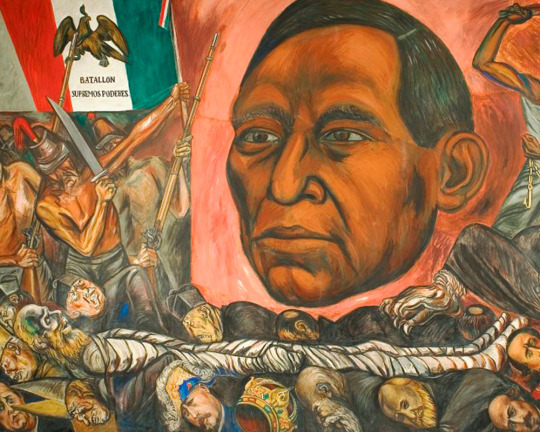
La Reforma y la caída del Imperio, José Clemente Orozco
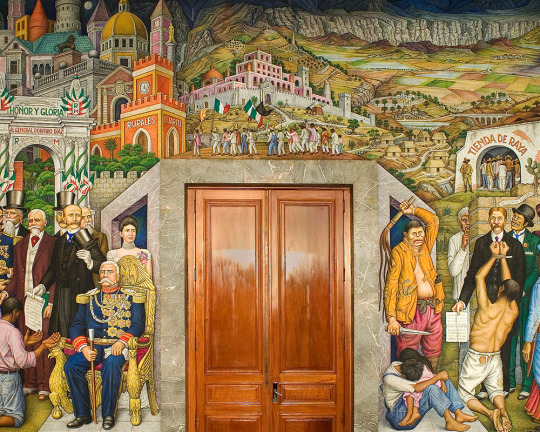
El feudalismo porfirista, Juan O’Gorman

Retablo de la Revolución (Sufragio efectivo no reelección), Juan O’Gorman

La Constitución de 1917, Jorge González Camarena
2 notes
·
View notes
Text
Promueven reforma para que instituciones de educación superior accedan a más recursos

CHILPANCINGO * Abril 10, 2024.
) Congreso de Guerrero
El diputado Fortunato Hernández Carbajal propuso reformar la Ley de Educación del Estado de Guerrero para que se promueva ante las instancias competentes, y conforme a los procedimientos establecidos en las disposiciones aplicables, que las instituciones de educación superior puedan acceder a los recursos destinados para el fortalecimiento y expansión de la investigación científica, humanística, desarrollo de la tecnología, la innovación y el arte en todas las regiones de la entidad.
En el documento que se turnó a la Comisión de Educación, Ciencia y Tecnología para su correspondiente análisis y dictaminación, el legislador expone que la educación superior es el nivel con el que culmina el sistema educativo, lo cual implica que no debe ser considerada en forma aislada, sino en relación con los ciclos educativos que le preceden.
Dijo, asimismo, que el sistema de educación superior exige que se den resultados de organización racional y funcionamiento eficiente, adecuadamente vinculados a los de niveles que le son previos; por ello, las metas y objetivos que se propongan para mejorarla, a nivel institucional, regional o nacional, formarán parte de la totalidad del sistema educativo nacional.
“Debido a la naturaleza de la educación superior, y no obstante su diversidad, todas las instituciones educativas de este ciclo cumplen objetivos comunes; en consecuencia, se hace necesario establecer un sistema específico de planeación permanente, con miras a satisfacer los requerimientos institucionales y las necesidades del desarrollo regional y nacional”, subrayó.
El legislador señaló también que las cifras de la cobertura en educación superior en Guerrero son lamentables, y sabiendo que la educación es la base fundamental del bienestar de la sociedad, el gobierno debe hacer la mayor inversión posible de recursos en este sector.
Por lo anterior, Hernández Carbajal propone que la secretaría estatal del ramo y las autoridades educativas a nivel municipal, promuevan ante las instancias competentes que las instituciones de educación superior puedan acceder a los recursos destinados al fortalecimiento y expansión de la investigación científica, humanística, el desarrollo de la tecnología, la innovación y el arte.
Asimismo, que estos recursos se destinen en apoyo a la investigación básica y aplicada, la generación de prototipos, científicos y tecnológicos, el diseño de proyectos para la mejora continua de la educación, la difusión y divulgación de la ciencia, innovación tecnológica y, en general, de todas aquellas acciones que contribuyan al desarrollo del país y del estado.
Iniciativas
La diputada Leticia Mosso Hernández presentó una iniciativa de Ley para la Protección y Tratamiento Oportuno e Integral del Cáncer en la Infancia y Adolescencia, con el objeto de establecer los lineamientos necesarios para la prevención, diagnóstico, registro, atención integral, tratamiento, rehabilitación, control, seguimiento y la vigilancia epidemiológica necesaria de este padecimiento, con estándares de calidad, seguridad y control, y que contribuya a la disminución de la mortalidad.
El diputado Carlos Cruz López presentó una iniciativa de reforma a la Ley para la Protección de los Derechos de las Niñas, Niños y Adolescentes del Estado de Guerrero para establecer la atención especial de la diabetes infantil como un asunto prioritario, incluyendo la detección temprana y el tratamiento adecuado, que prevenga complicaciones crónicas y garantice el derecho de los menores de edad al disfrute del más alto nivel posible. Fue turnada a la Comisión de los Derechos de las Niñas, Niños y Adolescentes.
Toma de Protesta

Ante el Pleno del Congreso rindió protesta Jorge Alejandro Cortés Alanís como diputado integrante de la LXIII Legislatura al Congreso del Estado de Guerrero.
Asimismo, rindió protesta Francisco Clemente Rivera como presidente municipal de San Luis Acatlán, luego de aprobarse la licencia por tiempo indefinido de Adair Hernández Martínez.
Dictámenes
Las diputadas y diputados también aprobaron la licencia por tiempo definido de la presidenta municipal de Acapulco, Abelina López Rodríguez, y la licencia indefinida del presidente municipal de San Luis Acatlán, Adaír Hernández Martínez, así como de varios síndicos y regidores de diversos municipios de la entidad.
También aprobaron la minuta con proyecto de decreto por el que se reforman, adicionan y derogan diversas disposiciones de la Constitución Política de los Estados Unidos Mexicanos en materia de Guardia Nacional, que amplía hasta 2028 la permanencia de esta corporación en tareas de seguridad pública.
Intervenciones
El diputado Marco Tulio Sánchez Alarcón participó con el tema “La importancia del turismo para el desarrollo de Guerrero y los retos de la nueva oferta turística”. Al respecto, consideró que el desarrollo turístico debe de ser sostenible y es necesario crear ofertas encaminadas a nuevos segmentos, como el turismo cultural y ecológico, para lo cual se deben proteger los recursos naturales del estado.
Por su parte, el diputado Antonio Helguera Jiménez participó con el tema "México en el concierto de las naciones y sus desafíos", señalando que el suceso ocurrido en la Embajada de México en Quito, Ecuador, no debe pasar inadvertido en el estado de Guerrero, sino que debe abordarse en todas las tribunas de las representaciones populares del país, en férrea defensa de la Patria.
) facebook.com/acapress.mx
) facebook.com/angelblanco.press
) facebook.com/groups/mexicosur.news
) facebook.com/groups/AcapulcoNoticias
) acapulcopress.com
Read the full article
#AdairHernándezMartínez#CongresodeGuerrero#FortunatoHernándezCarbajal#FranciscoClementeRivera#JorgeAlejandroCortésAlanís
0 notes
Text

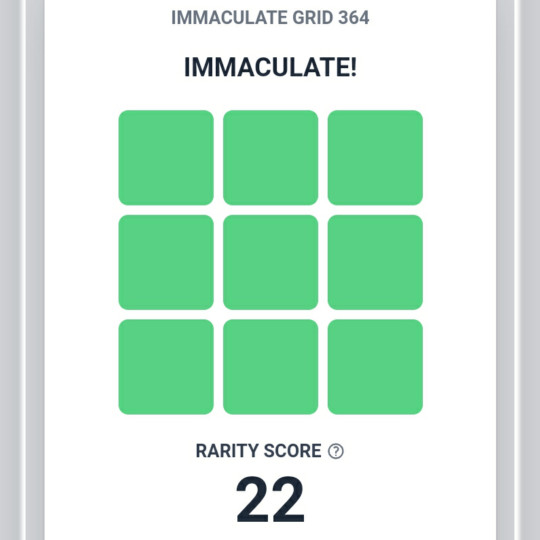
Happy Monday folks!!! Welcome to my MLB Immaculate Grid number 364!!!
This was both a challenging and entertaining grid. The played catcher/1B/2B/SS line was a doozy. C/1B was relatively easy since many catchers have also played 1B to give them a rest or to move to a new position. Its the 2B and SS boxes that proved to be interesting. I could have gone with Hall of Famer Craig Biggio for C/2B. But I think he would have scored high. I vaguely remembered that Jorge Posada played 2B near the end of his career. I also remembered that Russell Martin played a few games at SS while with the Blue Jays. Both of them scored the highest for me.
How often can someone pick both Jackie Robinson and Roberto Clemente in the same grid and only get a combined 0.4%.
Aside from those two legends and the previously mentioned players, I went with utility players for the other boxes. I instantly thought about the "Ham and Cheese Sandwich" man Alvaro Espinoza. During a Yankees broadcast back in the day, they were talking about how foreign players in the minors had a hard time with the language gap. Espinoza would always order a ham and cheese sandwich when they were on the road. When he was asked by one of the coaches as to why he ordered the same food everyday, he said that he did so because that's all he knew how to order in English.
And with that little story, I bid you farewell. On to grid number 365!!!
#MLB Immaculate Grid#Immaculate Grid#Baseball Trivia#Baseball History#Historia Del Beisbol#Yakyū No Rekishi#Baseball#Beisbol#Pro Yakyu#BaseballSisco
0 notes
Text
Império da Tijuca I
Vou contar, em breves relatos, um pouco da Escola de Samba que eu conheci, pela qual me apaixonei, e onde estou, de algum modo, já faz um bom tempo.
O Império é, e sempre foi uma Escola pobre, composta, essencialmente, quando a conheci, por moradores do Morro da Formiga e das Ruas Dezoito de Outubro e Natalina, e mais algumas poucas ruas vizinhas. Os presidentes (Tiãozinho, Mauro Afonso, Gaúcho, Cleuso, Natal, Carlão, Fernando Sérgio e Tê) sempre foram pessoas da comunidade, ou a ela ligados. O único forasteiro foi o Osmar Valença. Os mestres de bateria, com exceção do Kleber do Salgueiro e do Capoeira, sempre foram da comunidade: Gelson, Fernandinho, Márcio Porrete, Elias, Paulão, Walter Maluco e Jordan. Nosso melhor mestre-sala, Jorge Bossa Nova, também era da Formiga, assim como nosso maior compositor, Marinho da Muda. A velha-guarda era comandada pelo seu Tuninho da TV, um famoso técnico em televisores, e pelo Lafaete, que cortou o meu cabelo desde os meus 5 anos de idade. As alas eram de pessoas da área, como a ala dos bicões, chefiada pelo Fernando.
O Império da Tijuca sempre foi isso. Um lema antigo, já esquecido, dizia: "Império da Tijuca, uma pobre escola que insiste em nos dar alegria".
O Império da Tijuca é uma Escola que sempre foi marcada por grandes tragédias. A primeira que me lembro, foi nos preparos para o carnaval de 1966, quando, num grande dilúvio que caiu sobre a nossa cidade, o Morro da Formiga foi, em parte, destruído pela avalanche que desabou sobre ele. Lembro, apesar de ser uma criança muito pequena àquela época, dos grandes estrondos provocados pelas enormes pedras que se soltaram da encostas e rolaram morro abaixo. Moradores morreram, muitos componentes da Escola, e o local onde era confeccionado o carnaval foi engolido pelas pedras e pela lama. Perda total. O Império da Tijuca passa simbolicamente pela avenida de desfiles, capitaneada pelo Mauro Afonso, então presidente da agremiação. Esse foi só a primeira catástrofe na Escola.
Por conta da perda da quadra, o Império conseguiu a cessão de um terreno na Rua Conde de Bonfim, bem em frente à Rua Leite de Abreu, há uns 20 metro da minha casa, e ali montou sua quadra. Tudo ía muito bem, ensaios cheios, quando, no início dos anos 70 a escola é despejada para no local funcionar o estacionamento da Assembleia Legislativa. Fomos pra rua, e lá ensaiamos, para depois perambularmos por alguns espaços cedidos. As maiores quadras que conheci, e onde ensaiei com o Império, foram na Avenida Maracanã e na Rua Leite de Abreu, no meio da rua, sob a luz do luar e pisando no negro asfalto. Era nossa sina.
Até que nos anos 80 o Natal, presidente àquela época, consegue um terreno na Rua Conde de Bonfim, na Usina. Fomos para lá, mas não durou muito. Voltamos para a rua. A Leite de Abreu era nossa casa. E como enchiam os ensaios no meio da rua. Foram os melhores que fizemos.
A história nos levou a outros espaços. A quadra da Estácio, que logo depois foi demolida, o Clube dos Portuários, de onde tivemos que sair, novamente o terreno da Usina, de onde fomos colocados para fora até chegarmos no casarão da Rua Medeiros Pássaros, onde fomos impedidos de ensaiar.
E nossos barracões. Funcionaram em vários lugares até nos alocarmos num espaço na Avenida Venezuela, bem ao lado da Unidos da Tijuca. Fomos a primeira escola tirada daquela Avenida, onde funcionavam barracões de diversas outras escolas. Sem local para construir o carnaval, invadimos um terreno ao lado do cemitério do Caju, de onde tivemos que sair. Fomos para o antigo barracão da Rocinha, ao lado do da São Clemente até chegarmos à Cidade do Samba, de onde nos expulsaram covardemente, pois não merecíamos cair naquele 2014.
A Escola, para quem não a conhece direito, e só presta atenção nas que estão no grupo especial, possui uma discografia belíssima, com lindos sambas.
O maior de todos é o de 1971, "Misticismo da África ao Brasil", composto por Marinho da Muda, João Galvão e Wilmar Costa. Além deste, temos, entre outros, "Minas de Prata" de 1974 (Mauro Afonso, Jorge Melodia e Sinval Silva), "Guerreiro das Alagoas" de 1976 (Marinho da Muda e Tiãozinho), "O Mundo de Barro do Mestre Vitalino" de 1977 (Biel Resa Forte, Adilson da Viola e Chipolechi), e tantos outros, até chegarmos ao inesquecível samba de 2013, "Negra Pérola Mulher" composto por Samir Trindade, Serginho Aguiar, Araujo, Walace Menor e Alexandre Moreira, que proporcionou o maior desfile da história do Império da Tijuca.
Segue a lista de outros sambas monumentais da Escola, pra quem quiser escutar:
"As três mulheres do rei" - 1979 - Marinho da Muda
"De sacristão a Barão do Ouro" - 1980 - Marinho da Muda e Cajá
"Cataratas do Iguaçu" - 1981 - Zé Azeitona
"Se a lua contasse - Homenagem a Custódio Mesquita" - 1985 - Jorge Canuto, Ademir Jacaré e Moacyr Mangueira
"Tijuca, cantos, recantos e encantos" - 1986 - Pedrinho da Flor, Baster, Belandi e Marinho da Muda
"A coroa do perdão na terra de Oyó" - 1997 - Ala dos Compositores
"O intrépido Santo Guerreiro" - 2007 - Bola
Acho que o Marinho da Muda, pela importância dele para a Escola já é merecedor de um enredo. Fica a dica.
Edgar Filho
0 notes
Text
El balcón social | Movimiento Ciudadano, encrucijada y oportunidad para retomar estrategia rumbo a 2024
El balcón social | Movimiento Ciudadano, encrucijada y oportunidad para retomar estrategia rumbo a 2024
#PeriodismoParaTi #SociedadNoticias
#MC #NuevoLeón #DanteDelgado@DanteDelgado @MovCiudadanoMX @AdonaiCOficial @AlvarezMaynez @ClementeCH
La encrucijada actual que presenta para Movimiento Ciudadano (MC) la crisis política generada en Nuevo León…
La encrucijada actual que presenta para Movimiento Ciudadano (MC) la crisis política generada en Nuevo León, tras el enredo político que ha derivado en la renuncia de Samuel García a la candidatura presidencial; por paradójico que parezca, representa una oportunidad para el partido…

View On WordPress
#Adonaí Carreón Estrada#AMLo#Andrés Manuel#Andrés Manuel López Obrador#Balcón#Claudia#Claudia Sheinbaum#dignidad#El Balcón#El Balcón de la Sociedad#Jalisco#Jorge Álvarez Máynez; Clemente Castañeda Hoeflich; Adonaí Carreón Estrada#Lagos de Moreno#LAura Velázquez Alzúa#López Obrador#México#Movimiento Ciudadano#prioridades#Salud#Samuel García#SN#Sociedad#Sociedad Noticias#Sociedad-Noticias.com#sociedadNoticias#SociedadNoticias.com#Tecnología
0 notes
Text
Desmadre incluido
Desmadre incluido (2023)
#MiguelMarti #MacarenaGomez #ManuelTallafe #CristinaBrondo #MaraGuill #ArletteTorres
Mehr auf:
Jahr: 2023 (September)
Genre: Comedy
Regie: Miguel Martí
Hauptrollen: Macarena Gómez, Manuel Tallafé, Cristina Brondo, Mara Guill, Arlette Torres, Antonia San Juan, Javivi, Salva Reina, Jorge Clemente, Nacho Guerreros …
Filmbeschreibung: Ein arroganter Historiker auf der Suche nach Ruhm und einem schlecht verdeckten beruflichen Rivalitätsgefühl, ein verschwörerisch orientierter alter Mann,…

View On WordPress
0 notes
Text

#AmigosInolvidables #FeriasyFestivales
📣 “XIV CONGRESO NACIONAL DE ESCRITORES DE LITERATURA FANTÁSTICA Y CIENCIA FICCIÓN” 📜✒😱🙈📕📚
© Producción: Centro de Estudios Literarios Antonio Cornejo Polar.

📜 PROGRAMA:
✅ Miércoles 28 de Febrero
🕒 3:00pm. “Inauguración” a cargo de Gonzalo Cornejo y Elton Honores.
🕒 3:10pm. Presentación de libros: “El anarquista ilustrado. Tributo a José Güich Rodríguez” (Vida Múltiple, 2024) / “Fantasías nacionales. Actas del Congreso Nacional de Escritores de Literatura Fantástica y Ciencia Ficción (2021)” y “Visualidades imposibles. Actas del Congreso Nacional de Escritores de Literatura Fantástica y Ciencia Ficción (2022)” [Vida Múltiple, 2024), comentarios: Gabriela Cordero y Elton Honores.
🕒 3:35pm. Mesa 1: “Centenario de Rod Serling y la serie de culto The Twilight Zone (1959-1964)” a cargo de Tania Huerta, José Güich Rodríguez y Carlos Vera Scamarone, Modera: Richard Rimachi.
🕟 4:20pm. Mesa 2: “Distopía y futurismo: 40 años de Mañana, las ratas (1984) de José B. Adolph” a cargo de Martín Roldán Ruiz, Miguel Ángel Vallejo, César Santivañez y Alexis Iparraguirre, Modera: Elton Honores
🕔 5:25pm. Presentación de libro: “Nunca seremos nacidos” de Elton Honores (Maquinaciones, 2024), comentarios: Harry Beleván, José Güich y José Donayre
🕕 6:05pm. Mesa 3: “Vanguardismo y experimentación, 25 años de La fabulosa máquina del sueño (1999) de José Donayre” a cargo de Óscar Gallegos (La inteligencia del mal en La fabulosa máquina del sueño de José Donayre), Lisandro Solís (La historia en pedazos. La estética del fragmento en La fabulosa máquina del
sueño), Agustín Prado (Ciencia, ciudad atemporal y marginalidad (sentimental) en La fabulosa máquina del sueño) y José Donayre (escritor, editor y gestor literario), Modera: Elton Honores.

✅ Jueves 29 de Febrero
🕙 10:00am. Mesa 4: “Clemente Palma y la tradición fantástica peruana” [virtual] a cargo de Josué Yared Medina Huamán (Los enteógenos como puerta a lo fantástico en “Leyenda del hachisch” de Clemente Palma), Laura Judith Becerril Nava (¿Ensueño o realidad? El caso de “La granja blanca” de Clemente Palma), Nehemías Vega Mendieta (La transgresión fantástica en Desvariante de José Durand) y Richard Leonardo Loayza (Un texto contrafáctico. Don Quijote en Yanquilandia (1921), de Juan Manuel Polar), Modera: Richard Rimachi:
🕚 11:00am. Mesa 5: “Visiones del Gótico” [virtual] a cargo de Luis Mario Garay Rodríguez (La presencia del gótico en Resident Evil - 2002), Rosalba Anahí Rodríguez Haro (Politizar desde el entre: un acercamiento al tercer ojo en Cometierra de Dolores Reyes) y Claudia Gil de la Piedra (El horror cotidiano en los cuentos de Amparo Dávila y Shirley Jackson), Modera: Andrea Amenero.
🕚 11:45am. Presentación del libro [virtual]: “Esotéricos registros” de Victoria Vargas Peraltilla (Cascahuesos, 2024), comentarios: José Donayre y Poldark Mego, Modera: Andrea Amenero
🕒 3:30pm. Mesa 6: “Visiones del horror y el apocalipsis” a cargo de Randolph Markowsky (El porquero del infierno y otros relatos - El Gato descalzo, 2023), Falco Rivera (Nunca más madre y otros relatos de horror - Acuedi, 2023) y Alexei Vidam (Crónica de un nuevo Génesis - Torre de Papel, 2023), Modera: Álvaro Sempértegui.
🕟 4:15pm. Presentación de libro: “Visiones del Bicentenario de Poldark Mego (Maquinaciones, 2024), comentarios: José Donayre y Raúl Quiroz, Modera: Tais Zevallos.
🕟 4:50pm. Mesa 7: “Entre la distopía y el terror” a cargo de Ricardo Sumalavia (Croac y el nuevo fin del mundo - Seix Barral, 2022), Hernán Migoya (El fantasma de Stephen King - Pandemonium, 2023) y Carlos Carrillo (Summa Carnale - Pandemonium, 2023), Modera: Elton Honores.
🕔 5:55pm. Presentación de libros: “Bosque de Arces” (Maquinaciones, 2023) y “El libro de los pájaros negros” (Maquinaciones, 2023) de Jorge Casilla Lozano, comentarios: Ricardo Sumalavia, José Donayre y Elizabeth Peláez Sagastegui, Modera: Richard Rimachi.

✅ Viernes 01 de Marzo
🕙 10:00am. Mesa 8: “Visualidades presentes y futuras” [virtual] a cargo de Jesús Oscar Jara Godoy (El fantasma del paraíso: pequeños elementos de una posverdad), Sebastián Cortéz (Delirio narrativo y violencia a través de diferentes medios: American Psycho - Bret Easton Ellis, 1991 / Hotline Miami - Denatton Games, 2012) y Drive (Nicolas Winding Refn, 2011)), David Fernando Endara Ibarra (La tecnología aérea o la distopía zombie, dos visiones del futuro espiritual en los Andes Ecuatoriales) y Cristián Londoño Proaño (La visión de futuro en Angelus Hostis y Policía del Karma), Modera: Álvaro Sempértegui.
🕚 11:00am. Mesa 9: “Ruta del Río de la Plata al Caribe” [virtual] a cargo de Marcela Gándara Rodríguez (Volver al bosque: devenir monstruo y posthumanismo en El amor es una catástrofe natural de Betina González), José Emiliano Garibaldi Toledo (Terror verde: modulaciones de la ecofobia en dos cuentos “Los verdes” y “Un aroma de flores lascivas” de Eduardo Goligorsky), Nicolás García (Las pasiones alegres de Pablo Farrés. Ciencia ficción expresionista) y Ángela M. Valentín Rodríguez (Distopía nuestra de cada día. Un recorrido panorámico por la ciencia ficción producida por escritoras puertorriqueñas contemporáneas), Modera: Richard Rimachi.
🕛 12:00m. Presentación de libro [virtual]: “El llamado de Gea” de Gonzalo Portals y Aland Bisso (Torre de Papel, 2023), comentarios: Aland Bisso y Carlos Echevarría, Modera: Andrea Amenero.
🕒 3:30pm. Mesa 10: “Dimensiones de lo fantástico” a cargo de Mauricio R. Ganoza (La liga del honor - 2023), Erik Fernández Pozo (Talis - Maquinaciones, 2023), Andrea Rivera Carrillo (La calma del no ser - Maquinaciones, 2023) y Jeremías Martínez (La ceguera es como el mar - Cielo Gris, 2023), Modera: Tais Zevallos.
🕟 4:45pm. Mesa 11: “Futuros Distópicos” a cargo de Alfredo Dammert (Senderos del tiempo - Altazor, 2023), César Santivañez y Hugo Espinoza (Panóptica. Los últimos días del futuro - Pandemonium, 2023) y Juan Carlos Townsend (Tierra Tomada - Maquinaciones, 2023), Modera: Richard Rimachi.
🕔 5:50pm. Presentación de libro: “Cuadernos Urgentes” de Carlos Calderón Fajardo y Paul Asto Valdez (Fondo Editorial de la FLCH & Distopía Editores, 2023) comentarios: Paul Asto y André Alvarado, Modera: Cristina Ramírez López.

✅ Sábado 02 de Marzo
🕙 10:00am. Mesa 12: “Dimensiones de lo Fantástico 2” [virtual] a cargo de Juan Antonio Alvarez Gavidia (El cuy negro y otros relatos - La Nave, 2023), Lorena C. Mori (Estruendo de las sombras - Zafiro, 2023), Ugo Velazco (El camino de las flores - Dendro Ediciones, 2023) y Rodolfo Sánchez Coello (Sachapunk, cuentos andinos de ecoficción - Carmelinda, 2023), Modera: Richard Rimachi.
🕚 11:00am. Mesa 13: “Dimensiones de lo Fantástico 3” [virtual] a cargo de Alejandro Tejada Medina (Ciudad Refugio - Torre de Papel, 2023), Ángel Podestá Bautista (Ojos miel, bestias negras y otros seres innombrables - 2022), Rocío Uchofen (Solo para insomnes - Maquinaciones, 2023) y Adriana Alarco de Zadra (Diario de una sombra - Maquinaciones, 2023), Modera: Christian Cachay.
🕒 3:00pm. Conferencia Magistral: “La construcción del superhéroe en la historieta peruana. Supercholo (1957-1966) de Victor Honigman y Francisco Miro Quesada Cantuarias” a cargo de Diana Rodríguez Díaz (Universidad Nacional Mayor de San Marcos), Modera: Elton Honores.
🕒 3:45pm. Mesa 14: “De la literatura a las imágenes en nuevos medios” a cargo de Angie Cabrera (Análisis literario y cinematográfico del terror japonés: el caso de Dark Water), Wilder Castillo (More human than human. Reflexiones en empatía y humanidad en Do androids dream of electric sheep - 1968 y Blade Runner - 1982) y Flavia Paredes (Carrie, entre la palabra escrita y la imagen cinematográfica), Modera: Tais Zevallos.
🕟 4:35pm. Mesa 15: “Lo grotesco y lo fantástico en las artes visuales” a cargo de Andrea Amenero (Lo monstruoso en la obra de Gustavo Doré), Ronald Ypanaqué (Análisis formal de las ilustraciones de carácter grotesco en la historieta argentina El Eternauta, versión de 1957-1959 y su contenido ideológico), Tais Zevallos (Lo fantástico en Shahmaran (2023) de Umur Turagay y Pinar Bulut) y Raschid Rabi (Husmeante (1983-1984) de Trillo y Mandrafina y El sueñero de Enrique Breccia (1984-1985). Dos historietas de la revista Fierro en un 1984 en transición de géneros y de épocas), Modera: Álvaro Sempértegui.
🕔 5:35pm. Clausura.
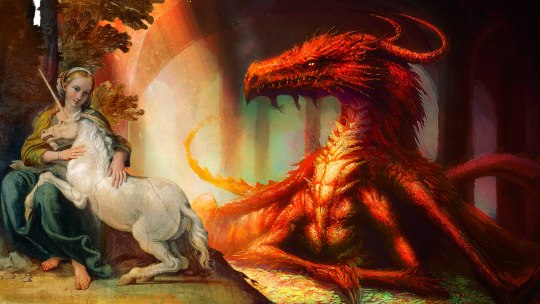
📌 JORNADAS:
📆 Del 28 de Febrero al 02 de Marzo
🕙 10:00am. a 6:00pm.
🏫 Auditorio de la Casa de la Literatura (jr. Áncash 207, Estación Desamparados - Centro de Lima)
🚶♀️🚶♂️ Ingreso libre
0 notes
Link
0 notes
